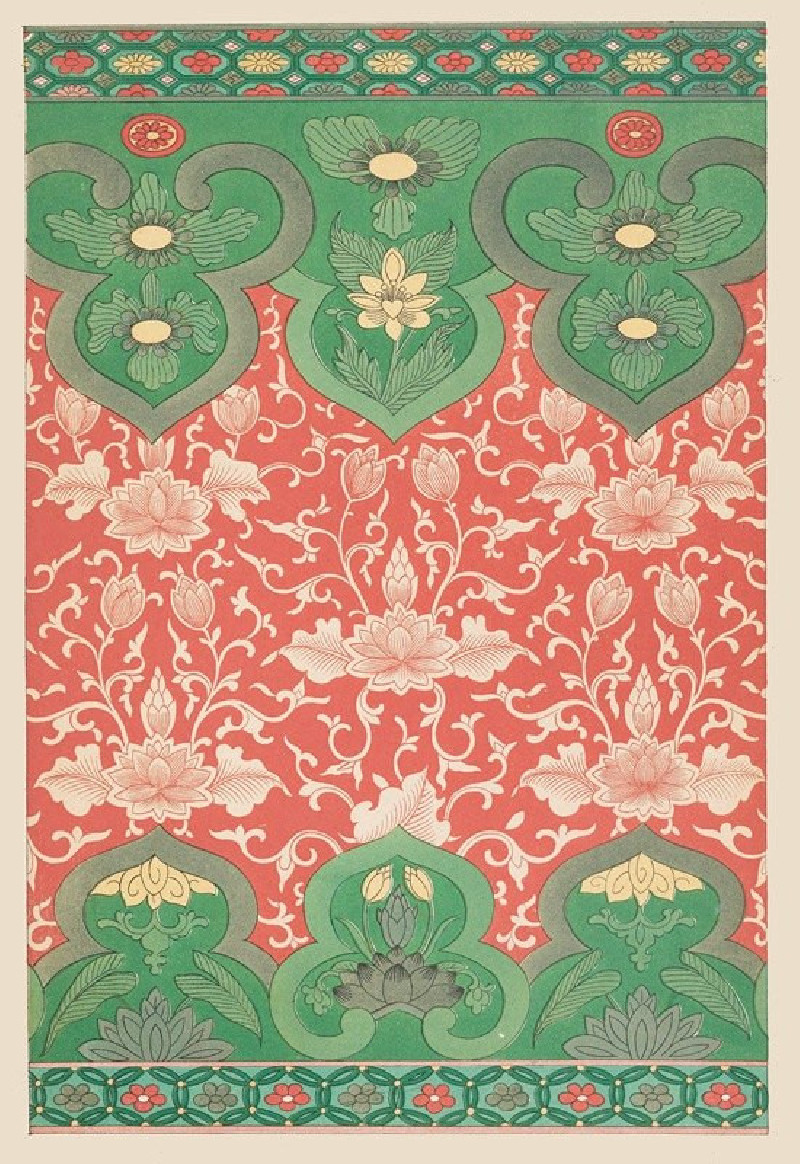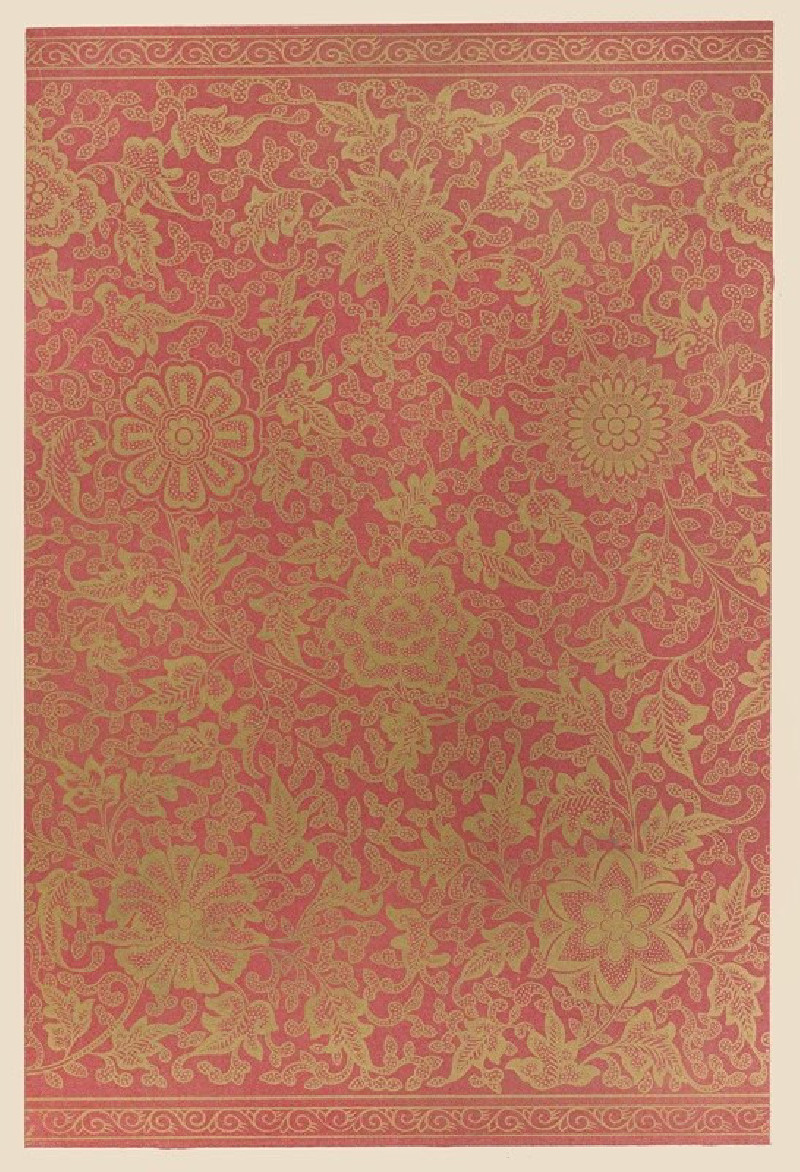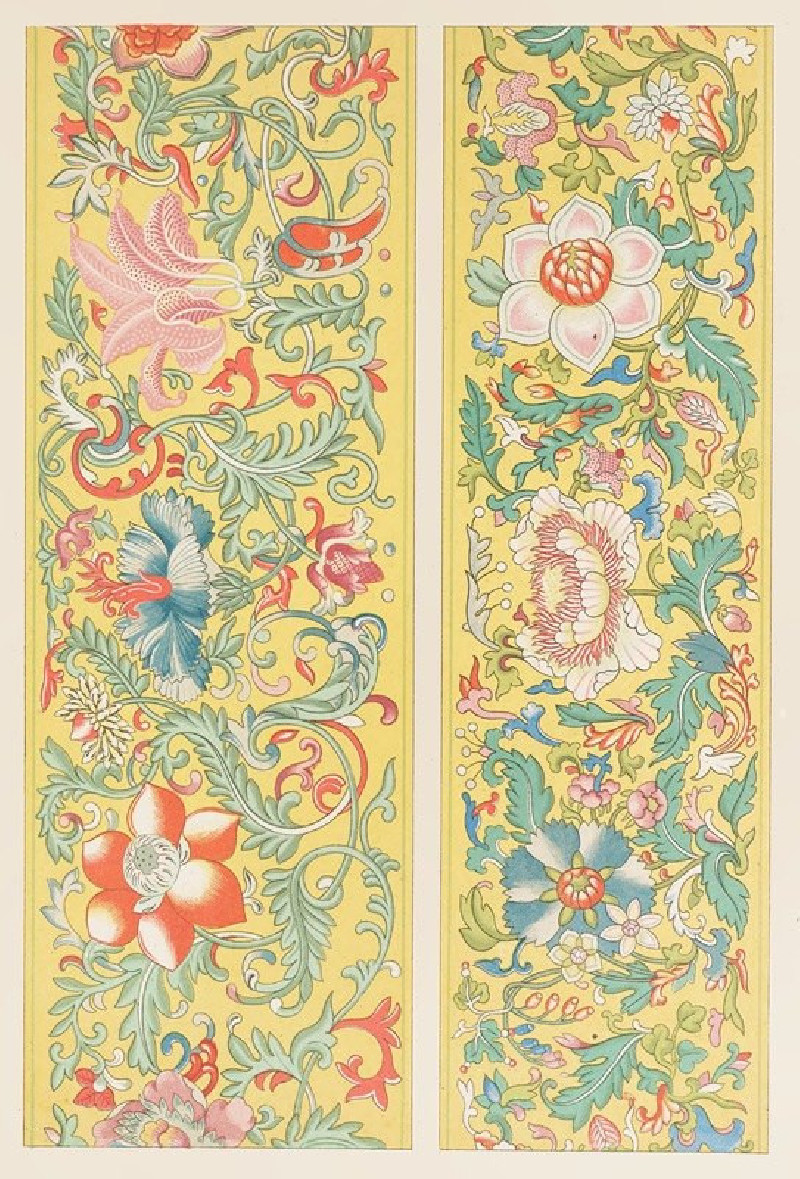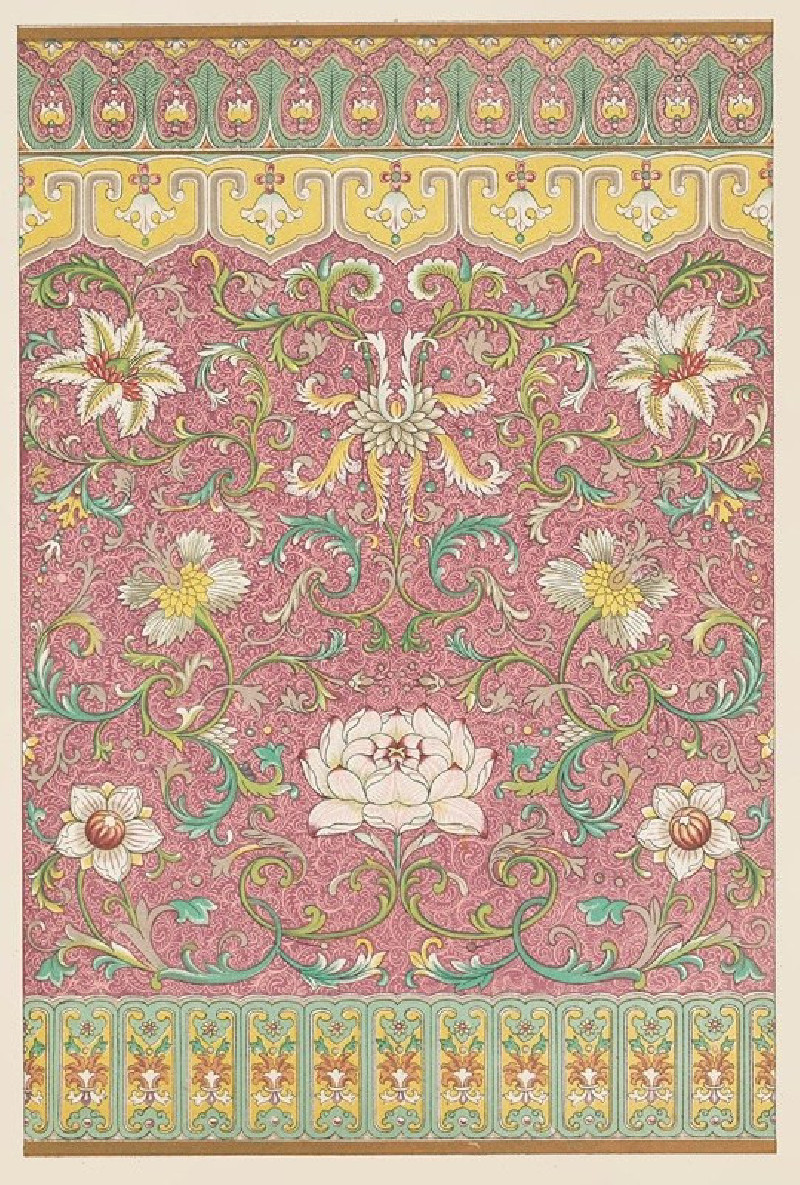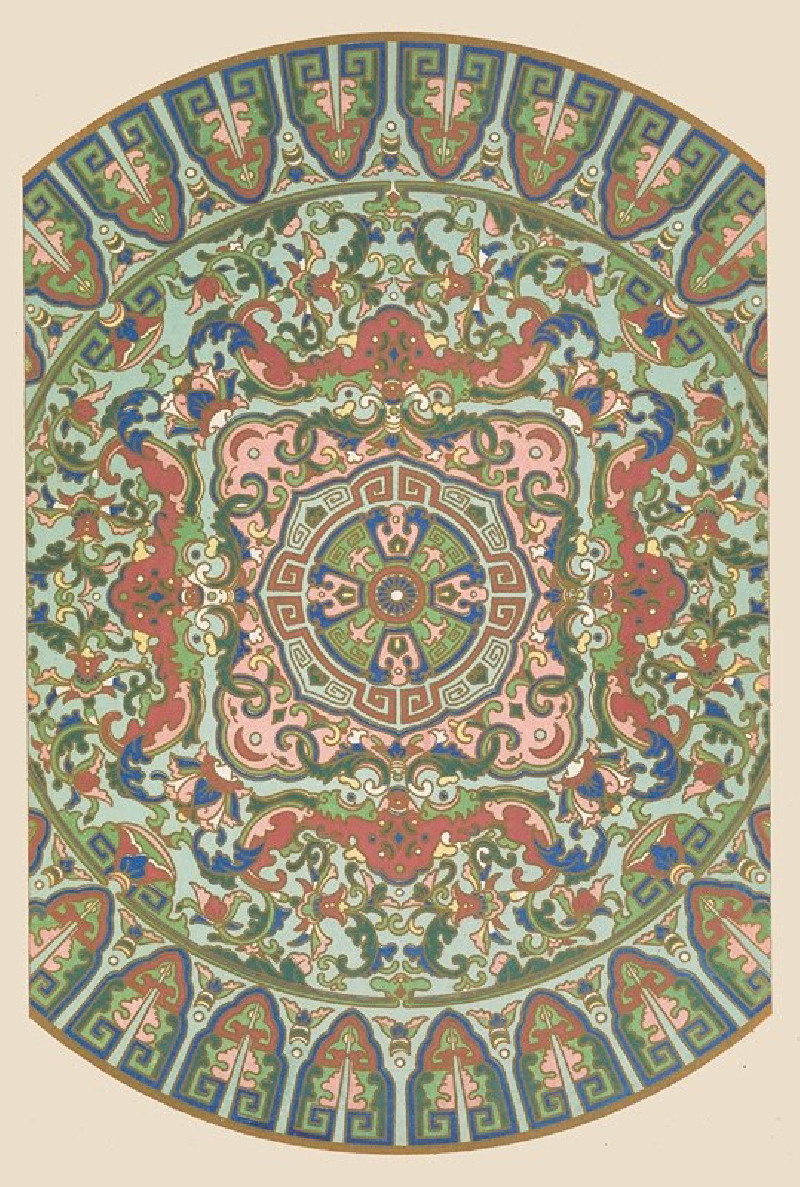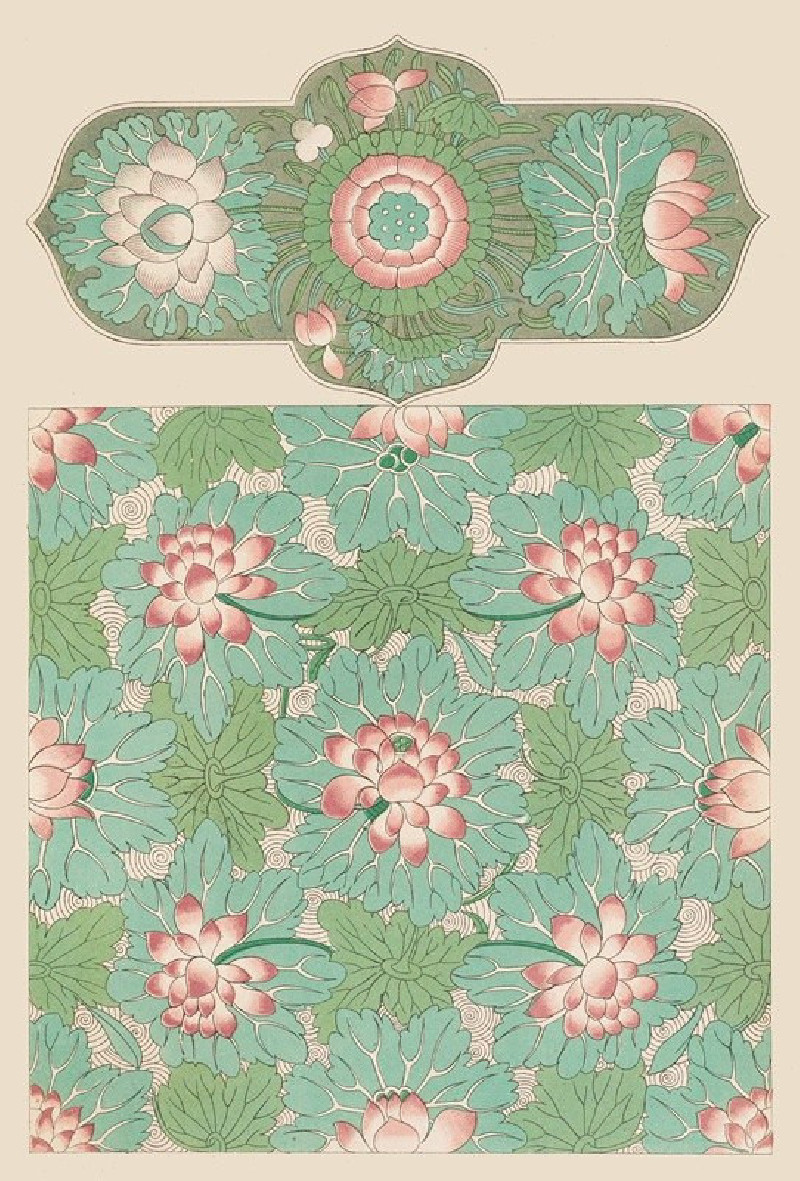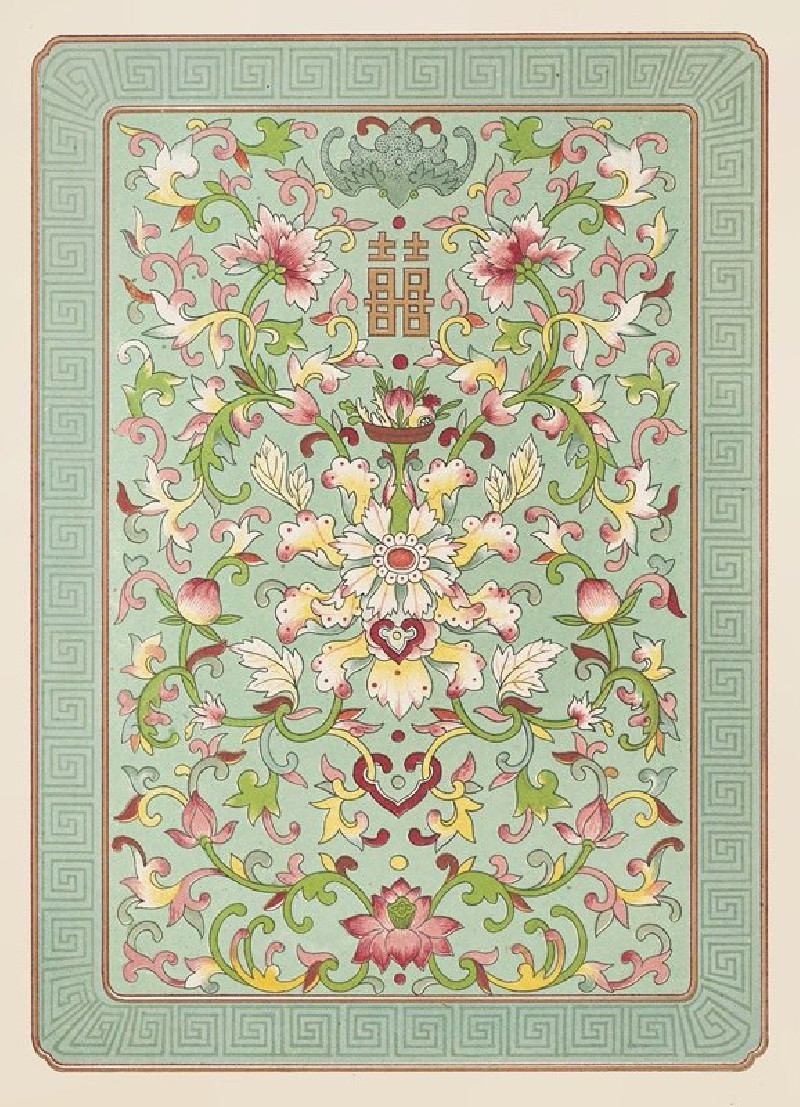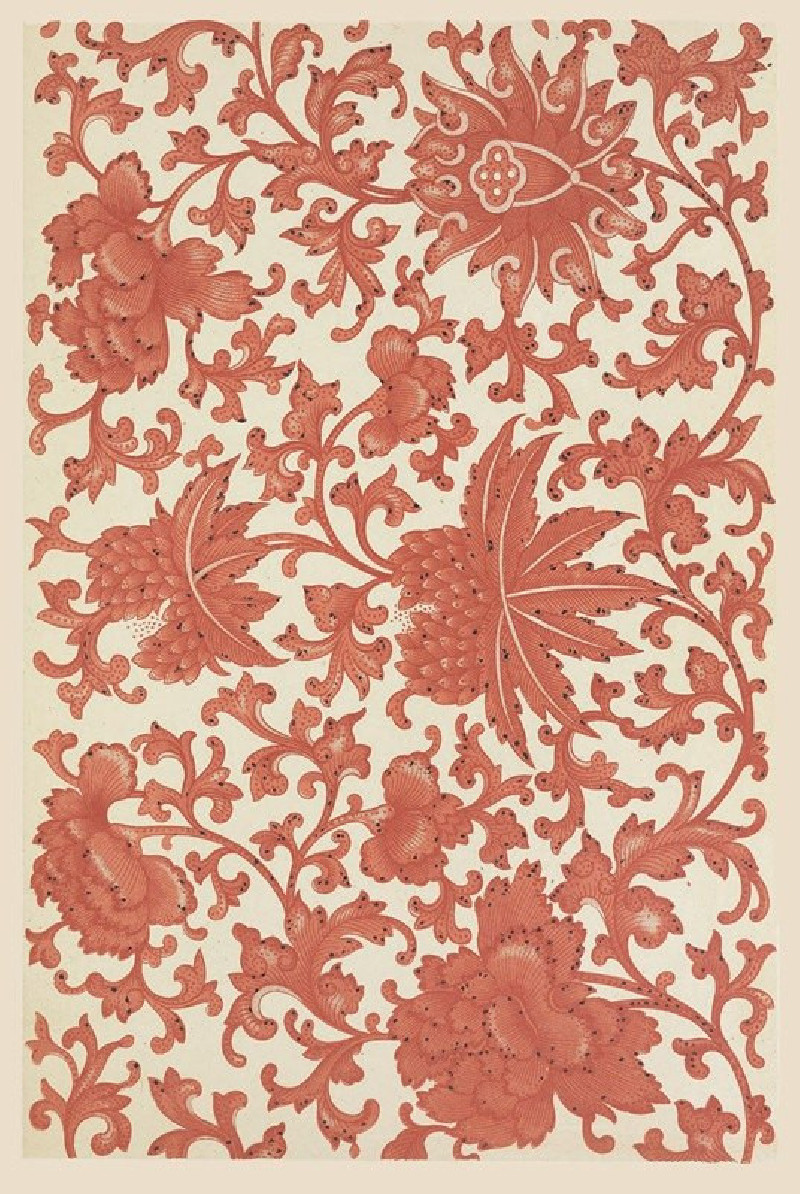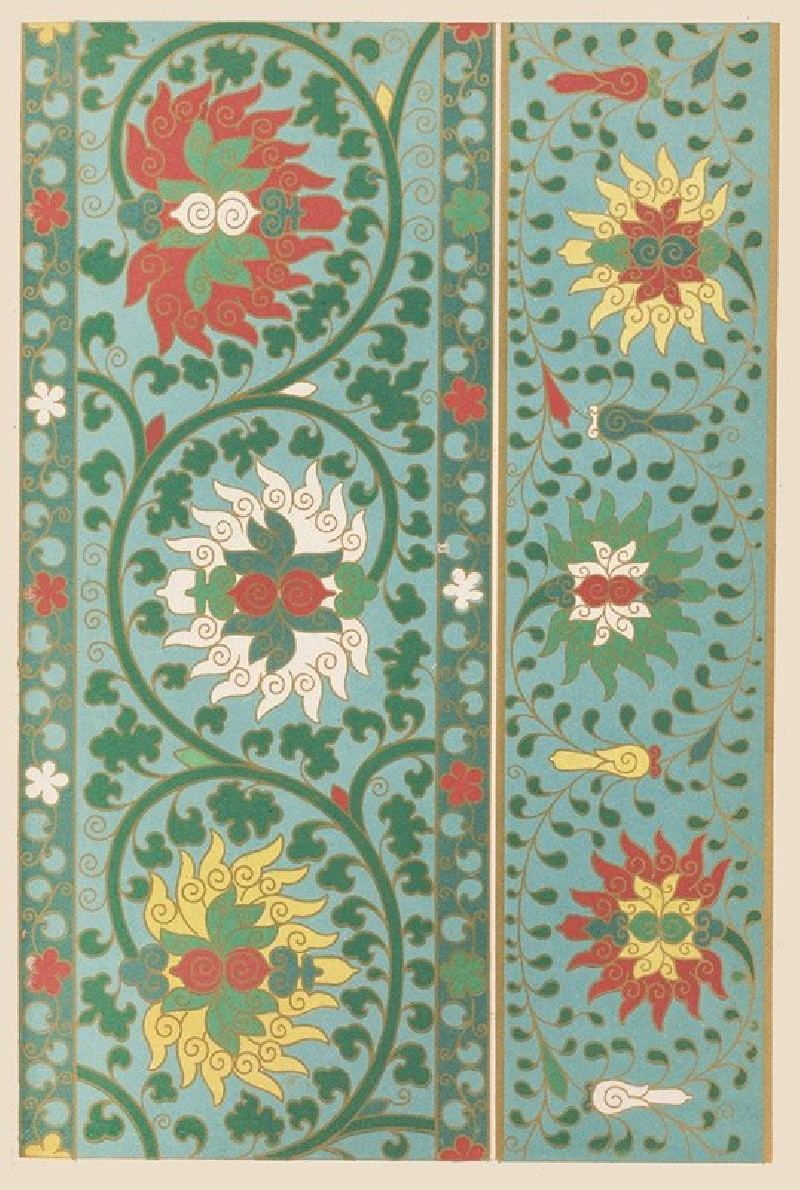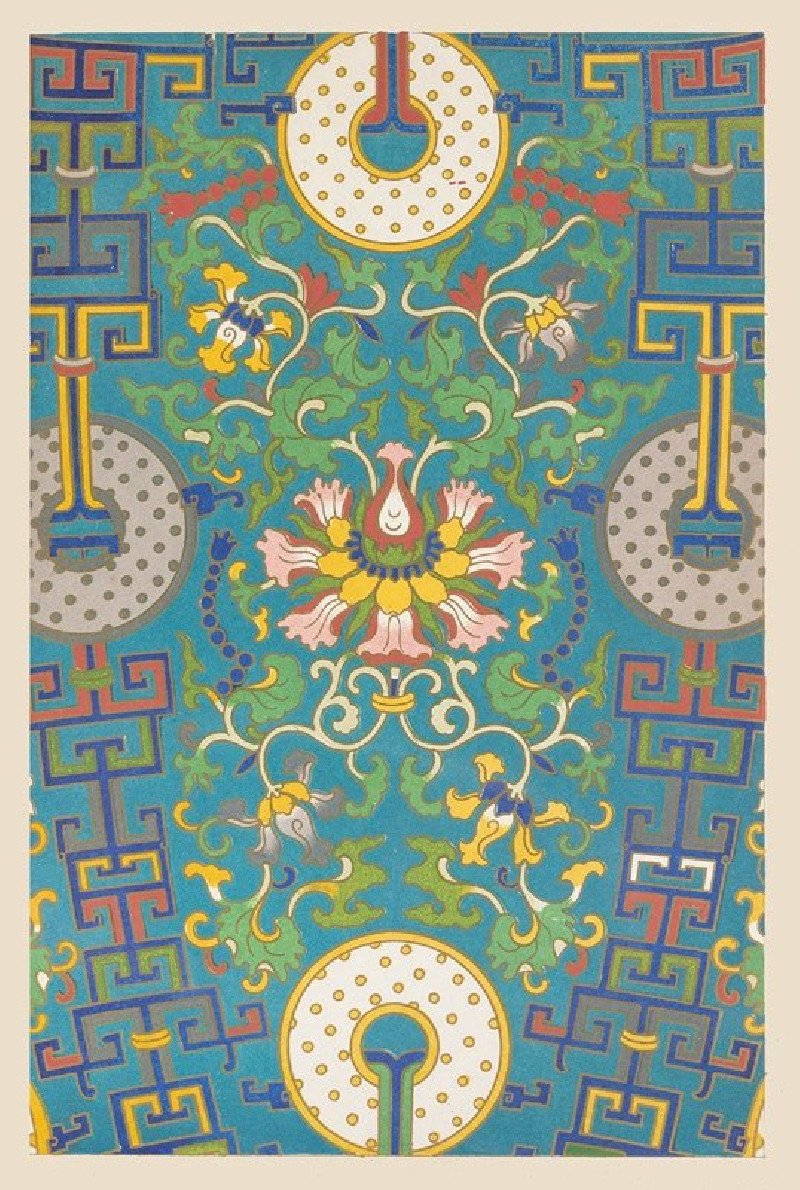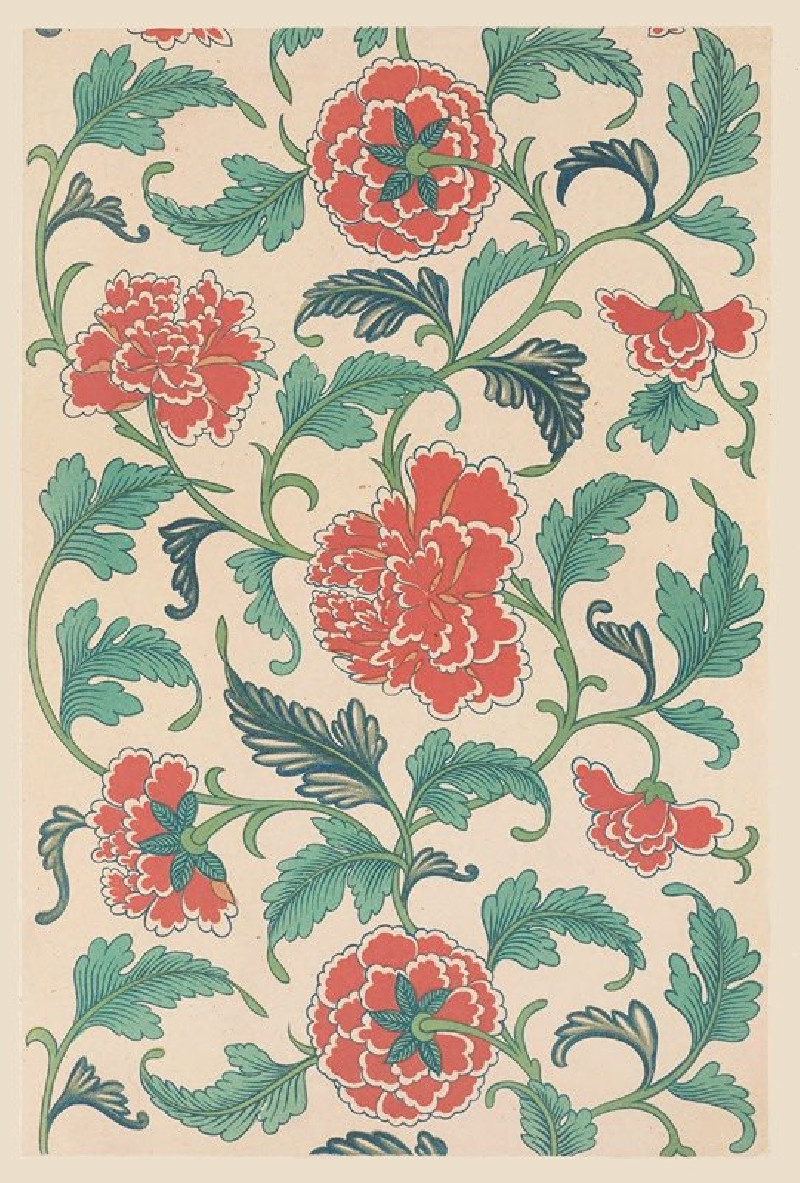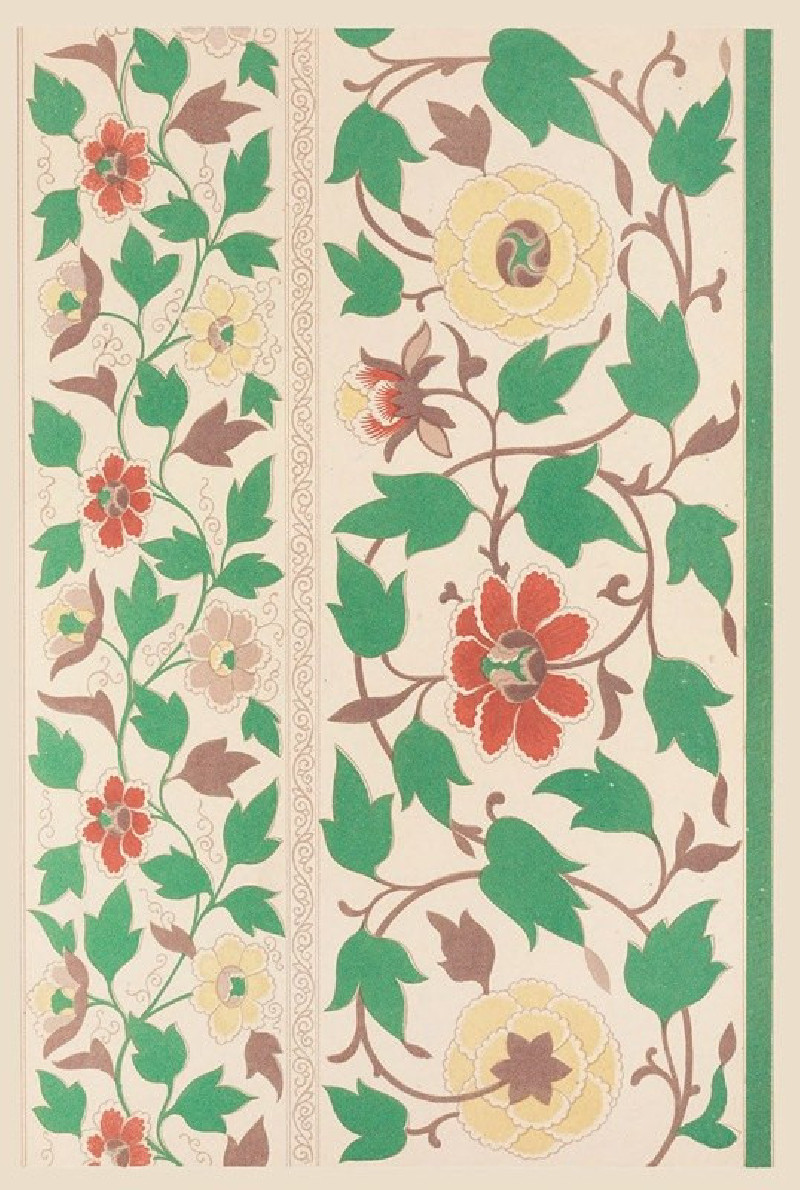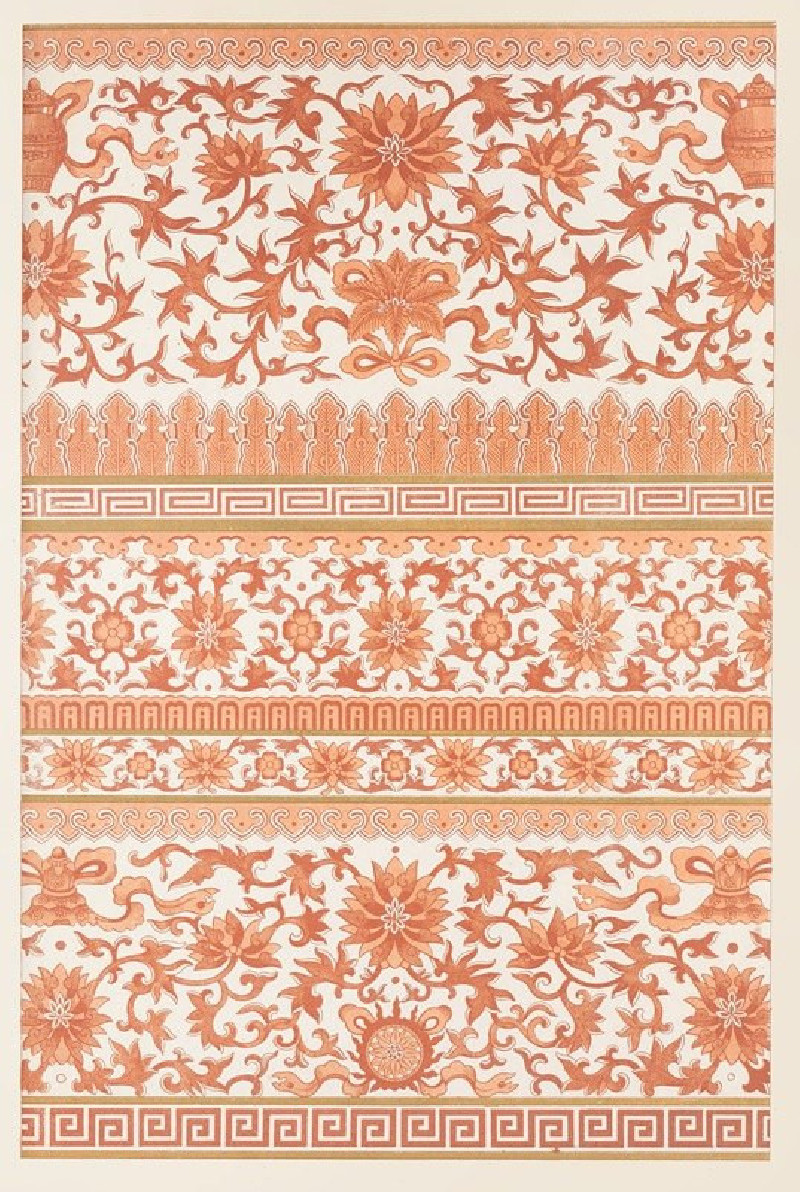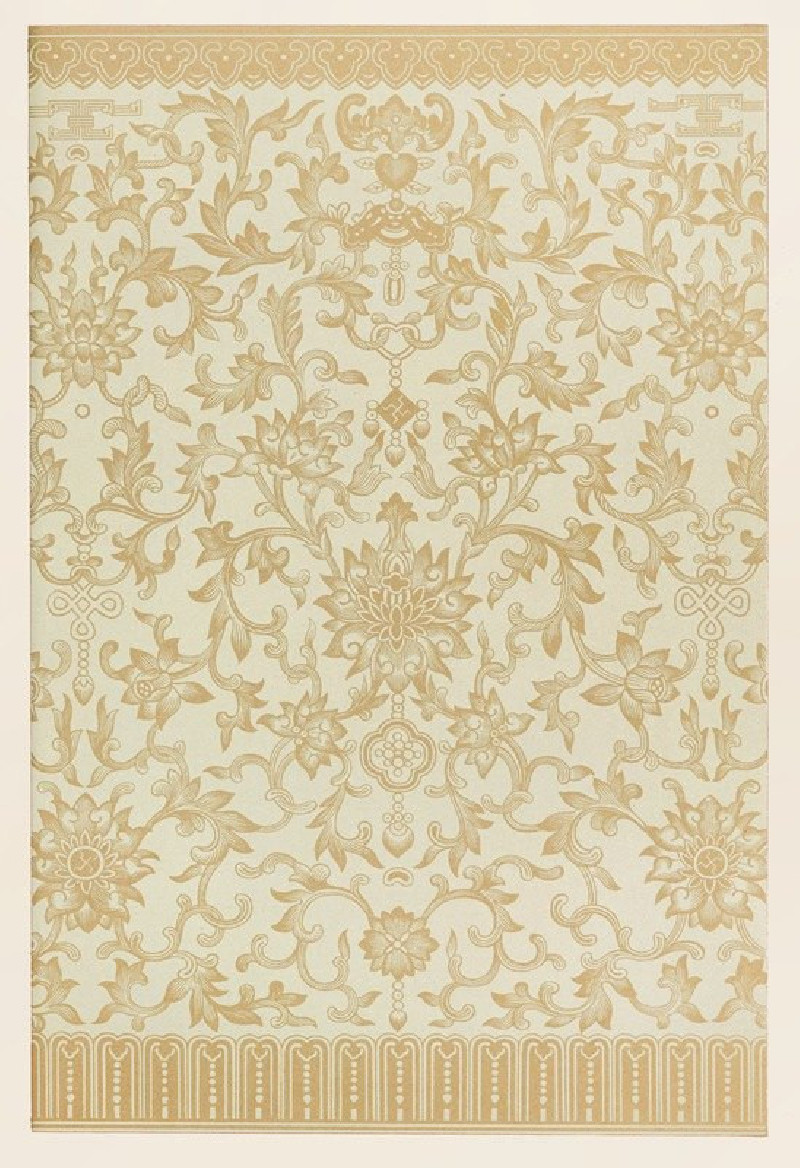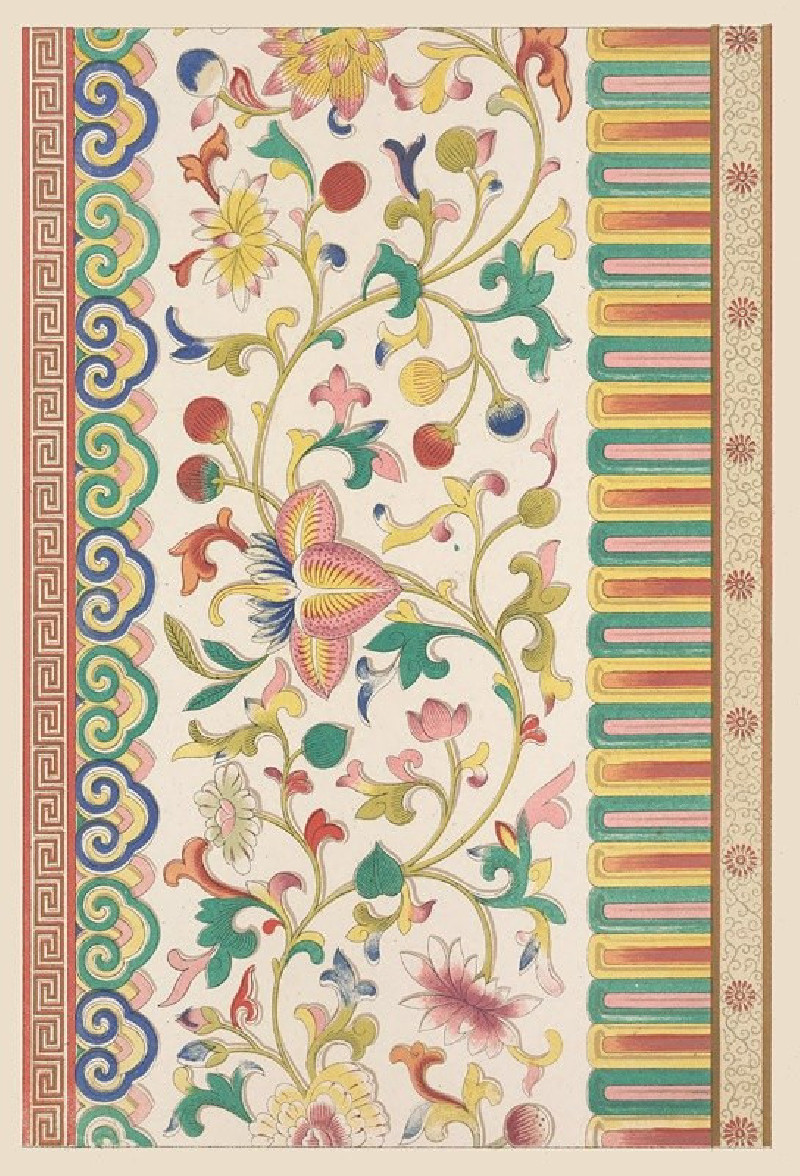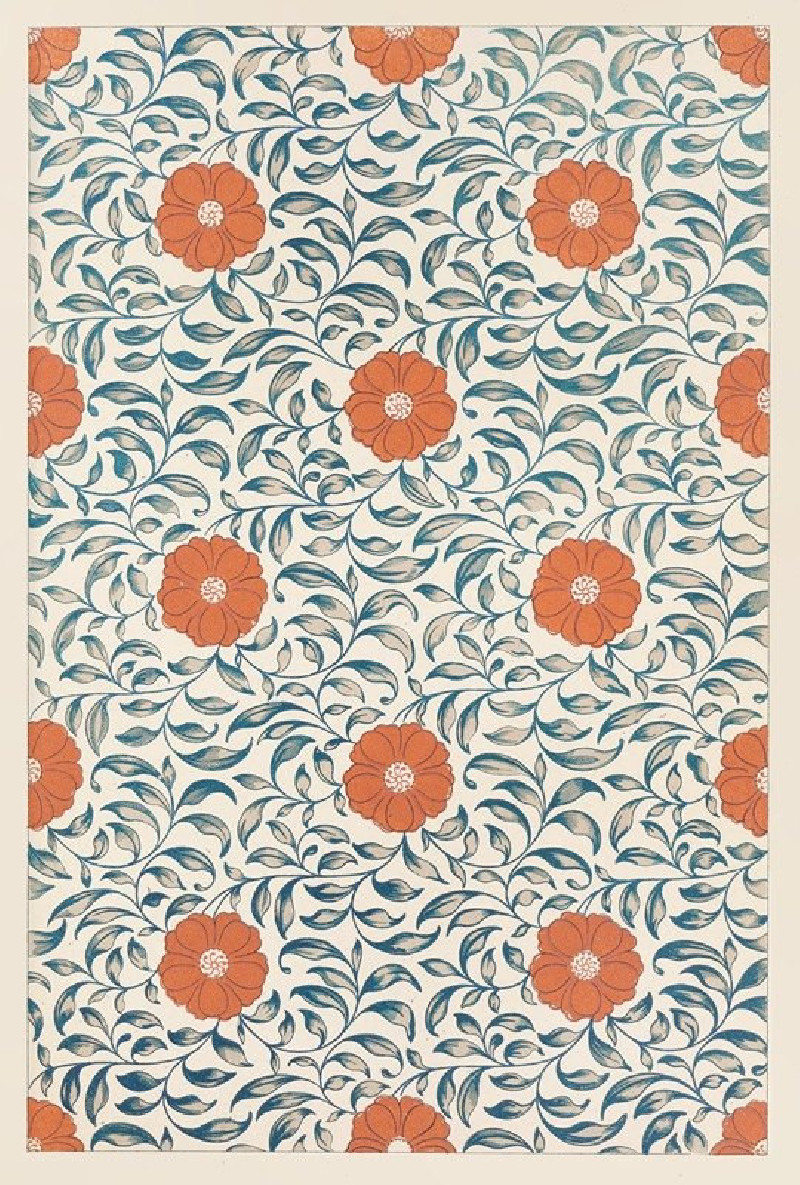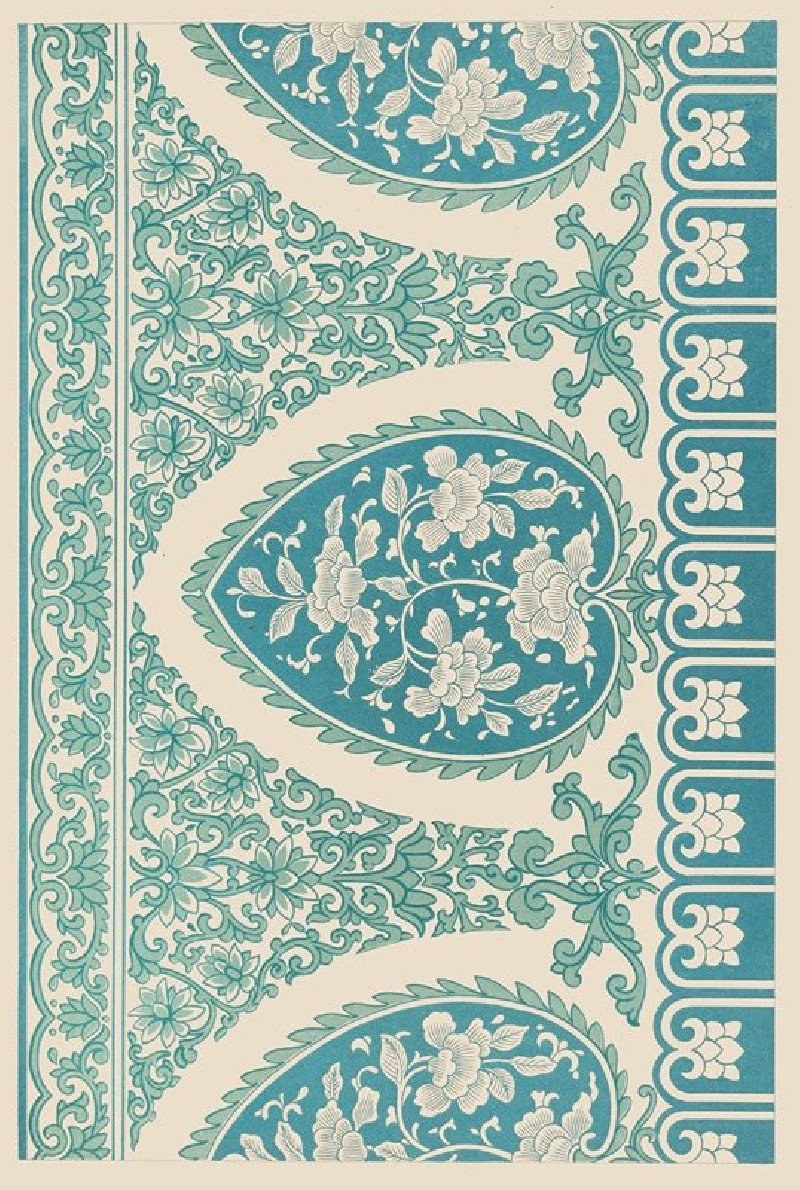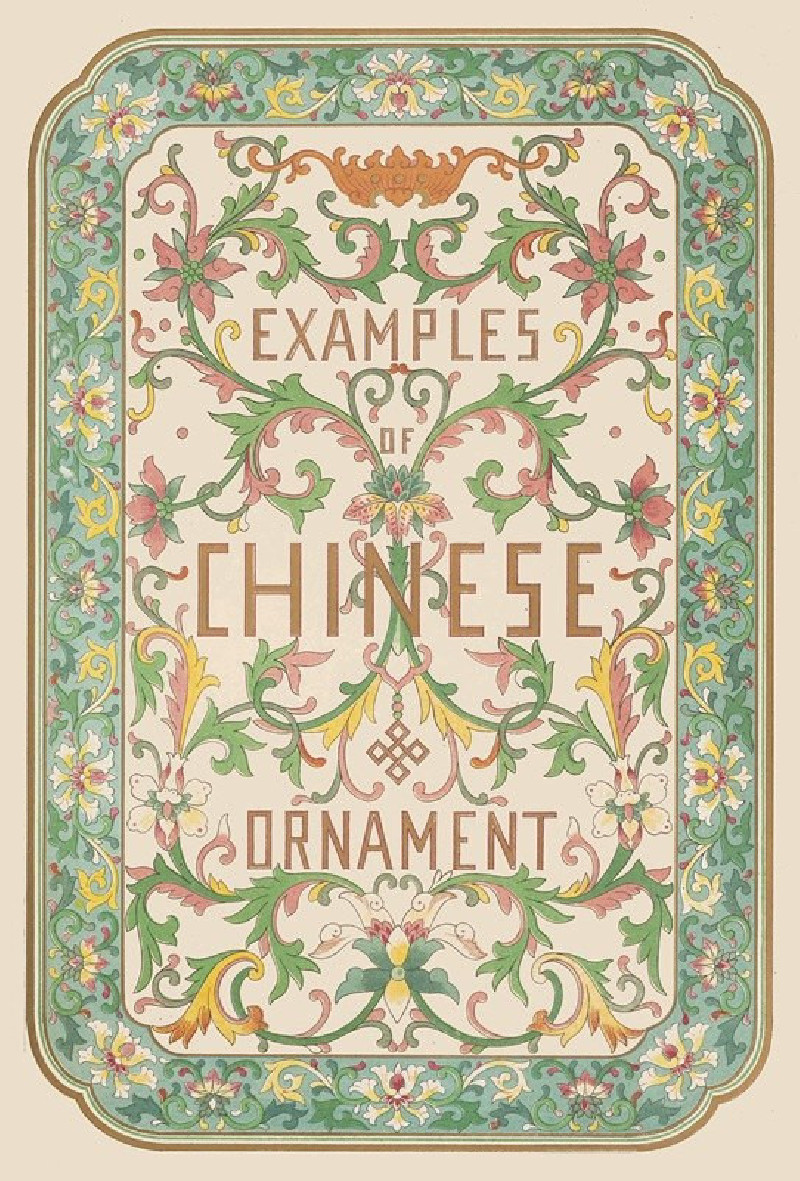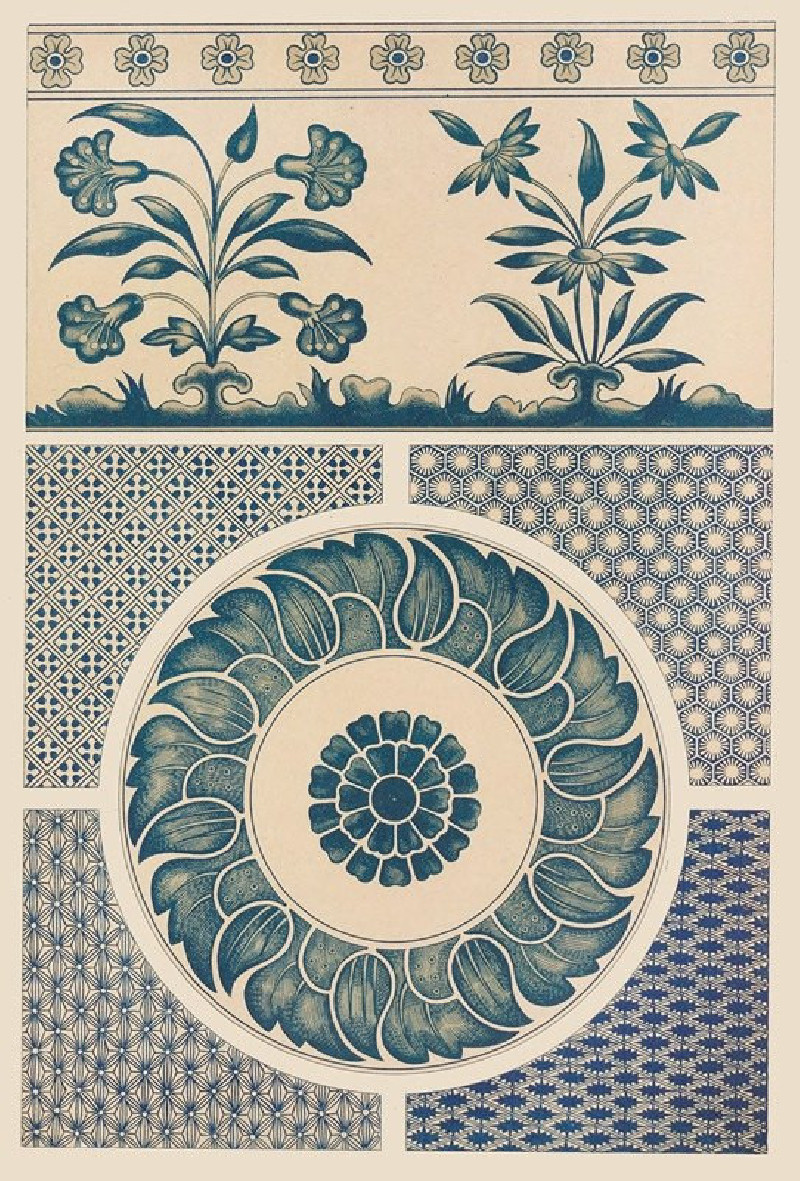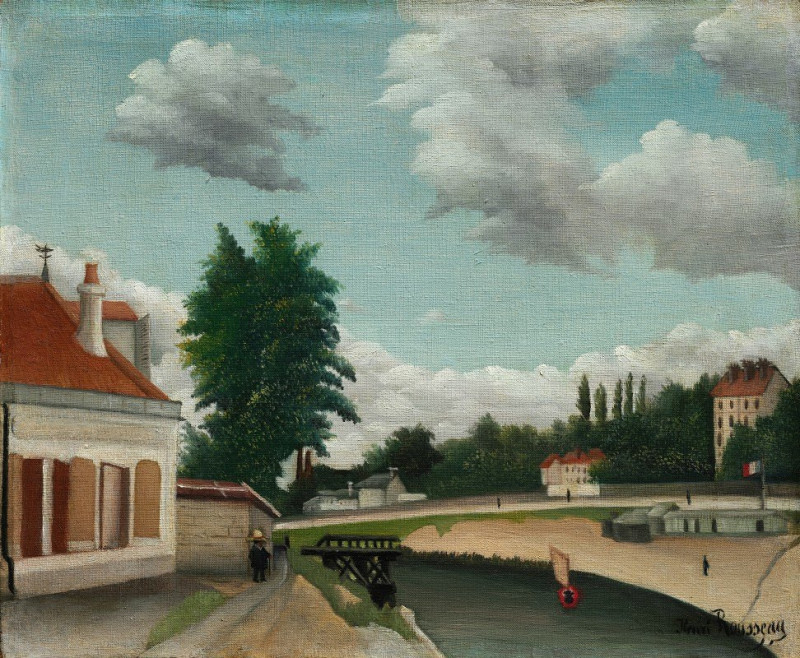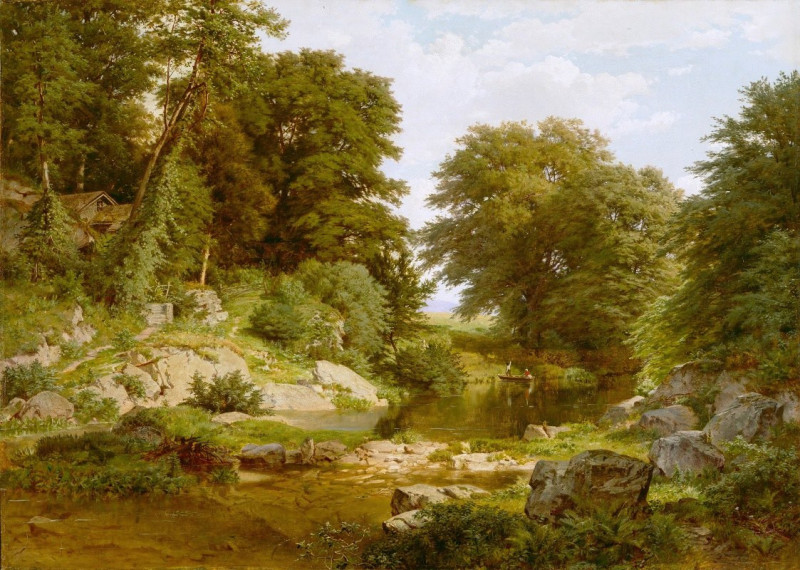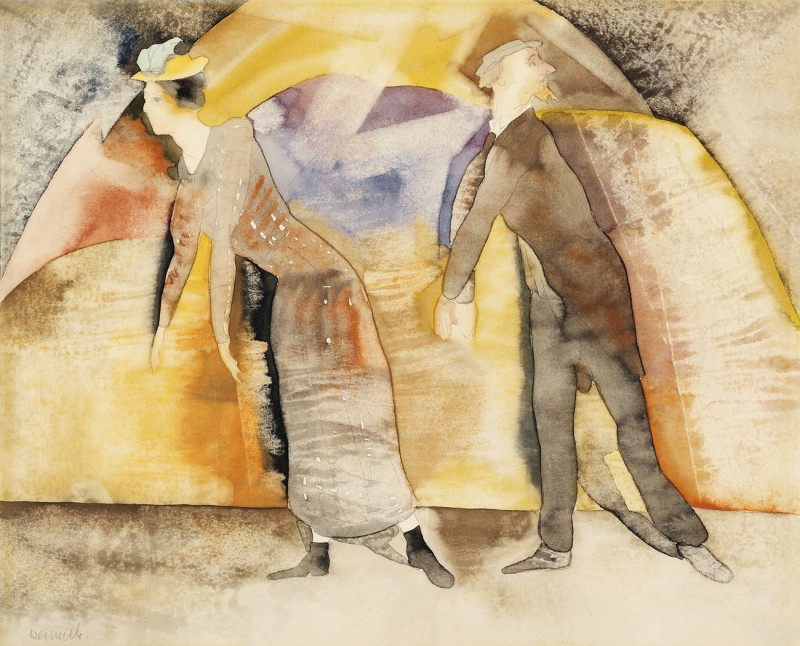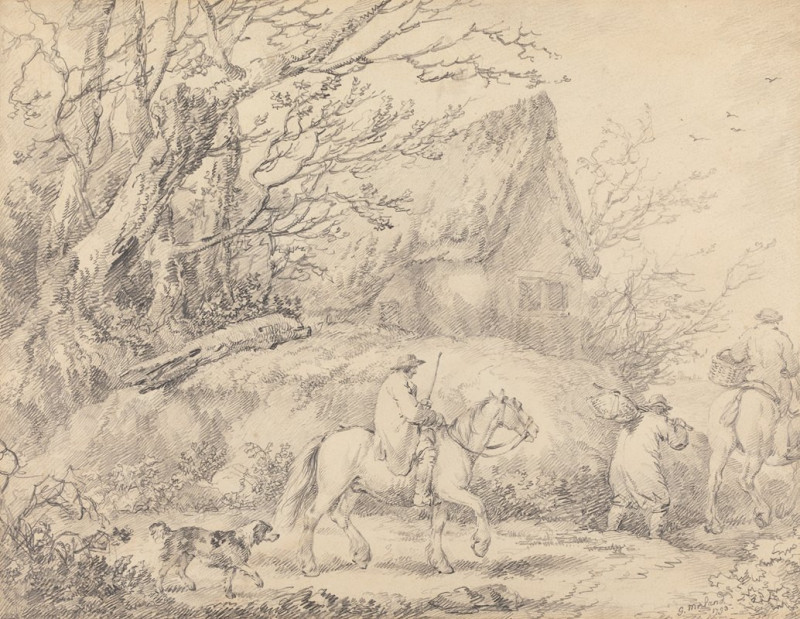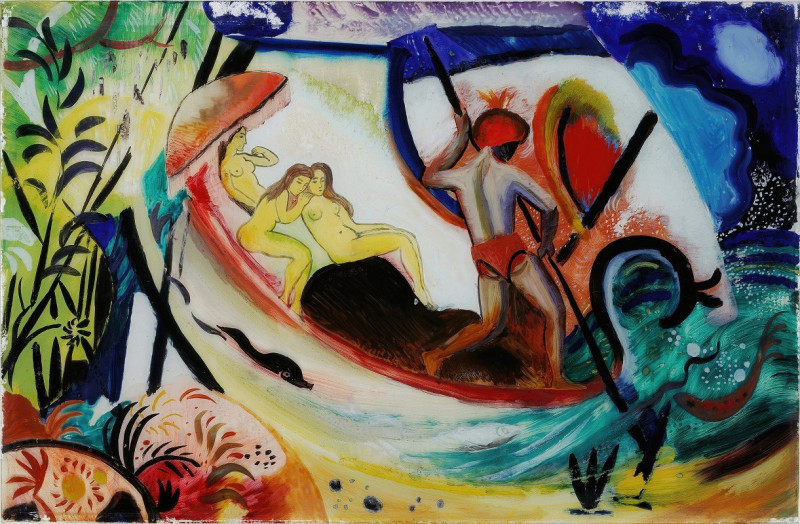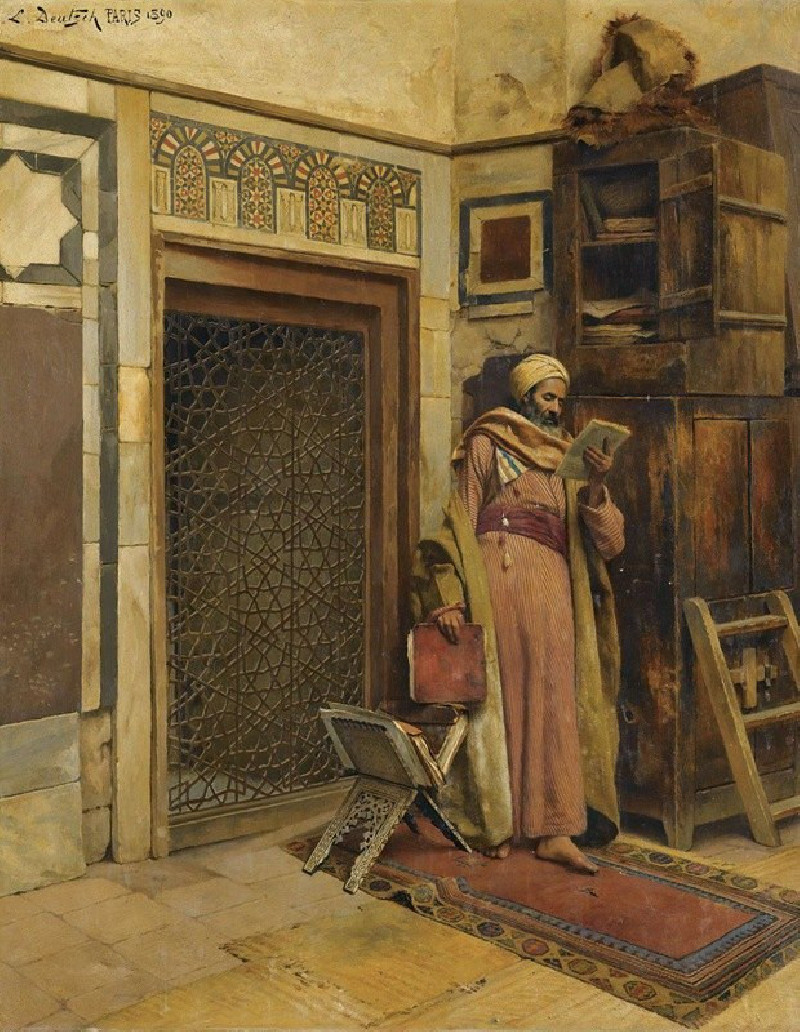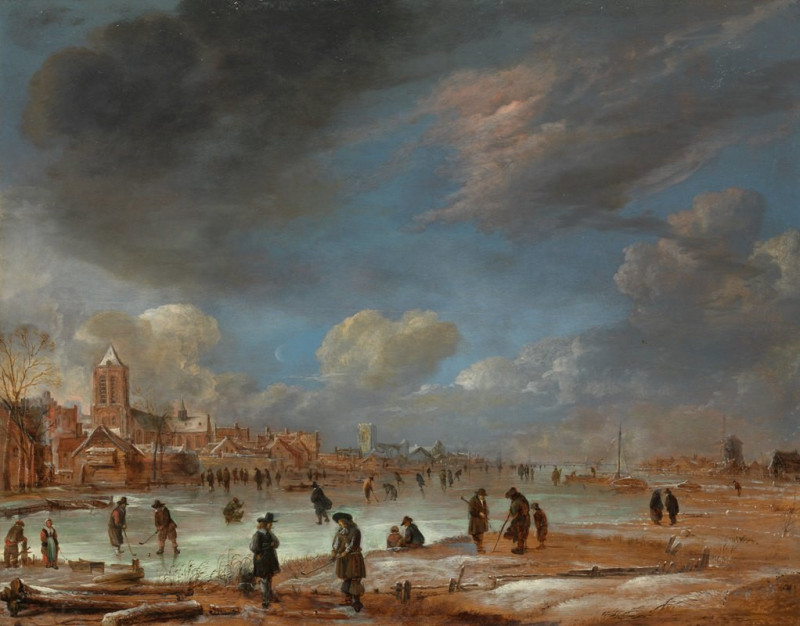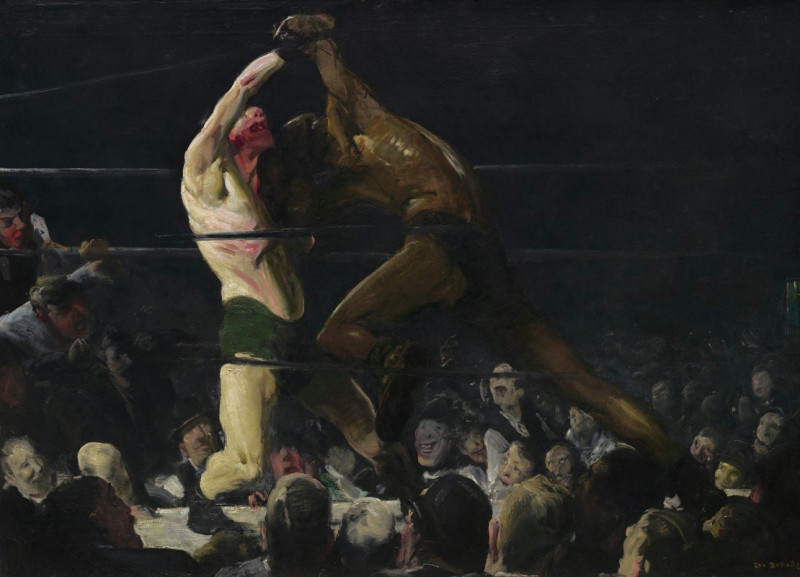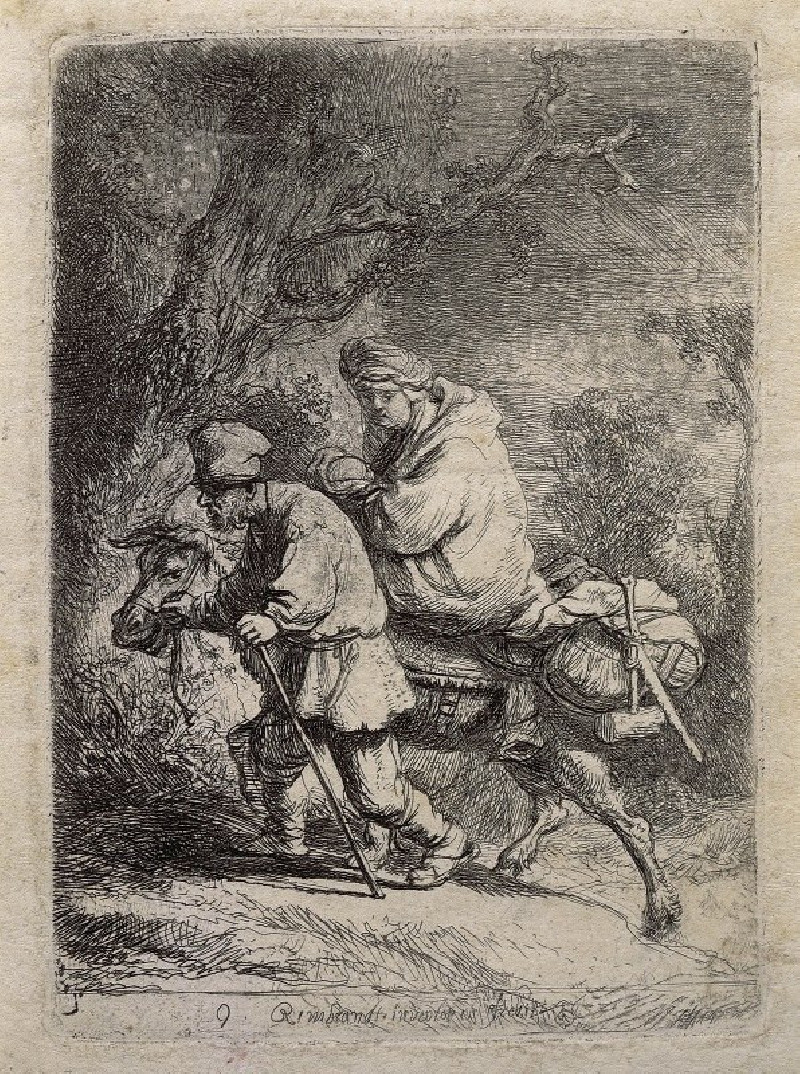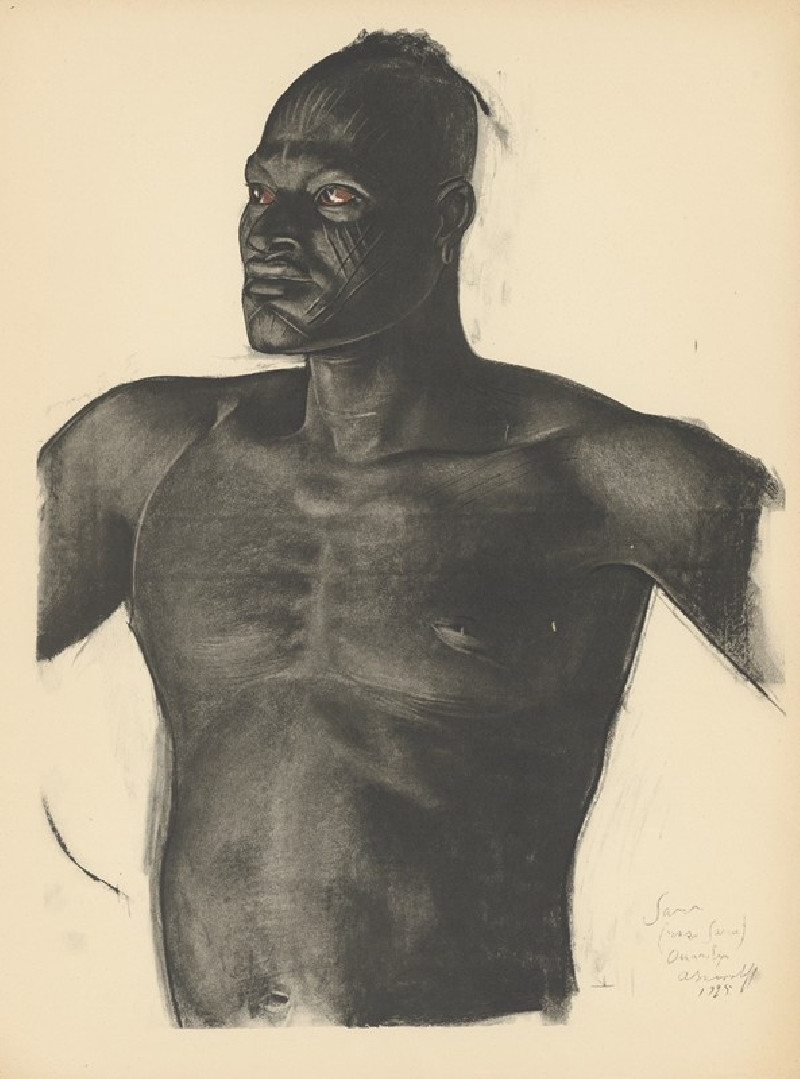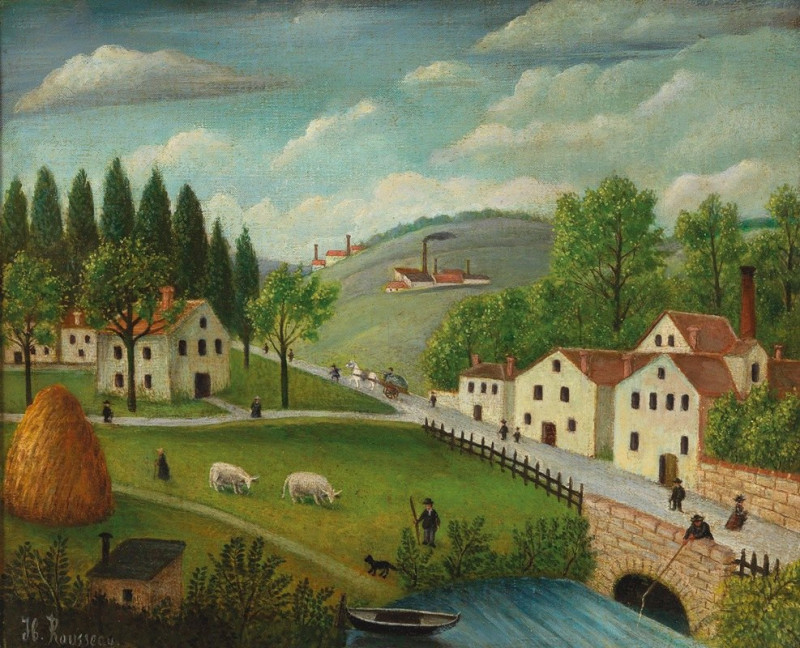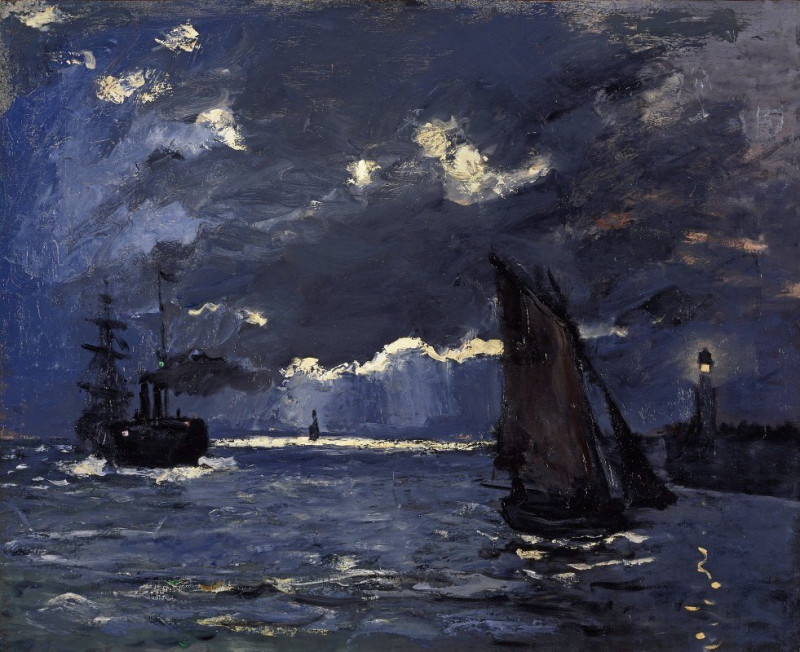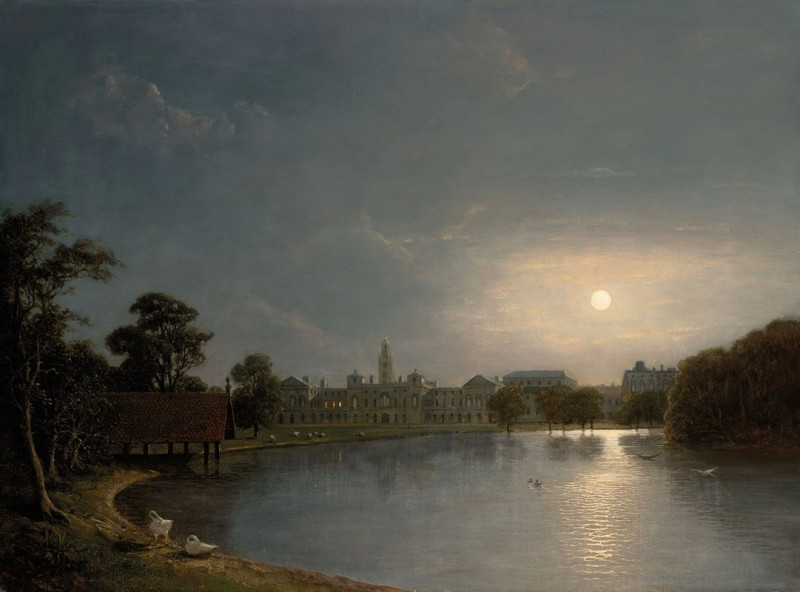Examples of Chinese ornament, Pl.84 (1867)
Technique: Giclée quality print
Recommended by our customers
More about this artwork
Discover beauty and intricate design in Owen Jones' enchanting plate 84 from "Examples of Chinese Ornament," created in 1867. This beautiful work captures the essence of traditional Chinese ornamentation with its elegant floral patterns and rich color palette.At first glance, one is drawn to the bold red background, which serves as a vibrant canvas for the symphony of floral motifs that dance across the surface. These include delicately outlined lotus blossoms, which symbolize purity and beauty in Chinese culture, interconnected by sinuous vines and leaves. The composition is characterized by its graceful repetition and rhythmic flow, embodying a sense of harmony that is often sought in Chinese art.The upper and lower borders of the painting introduce a striking contrast with a distinctive green hue, framing the central floral array. Here, larger, stylized floral elements anchor the design, featuring lotus flowers cradled within shield-like, curving shapes. These are accented with lighter green and yellow tones that catch the eye, harmonizing the overall composition.A further decorative band runs along the very top and bottom edges, incorporating smaller geometric and floral patterns in a medley of green, yellow, and red, adding depth and intrigue to the borders.This piece by Owen Jones not only showcases the aesthetic elegance of Chinese decorative arts but also reflects the Victorian fascination with Eastern designs during the 19th century. It is a testament to the era's passion for exploring and incorporating diverse cultural motifs, which Jones himself championed as a leading design theorist and educator."Examples of Chinese Ornament" remains a crucial work for understanding the intercultural exchanges that influenced European art and design.
Delivery
Returns
Owen Jones was an English-born Welsh architect. A versatile architect and designer, he was also one of the most influential design theorists of the nineteenth century. He helped pioneer modern colour theory, and his theories on flat patterning and ornament still resonate with contemporary designers today.

